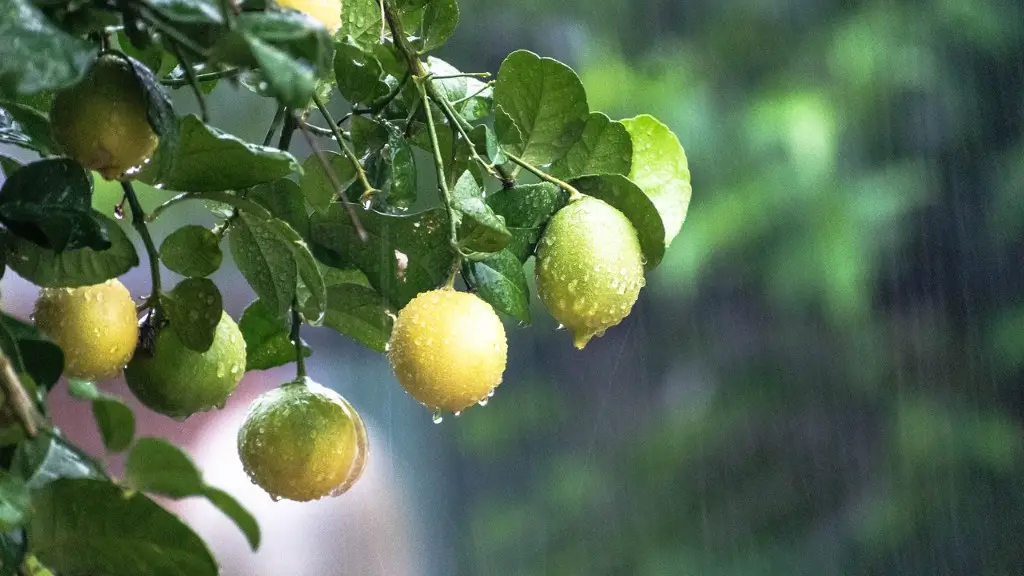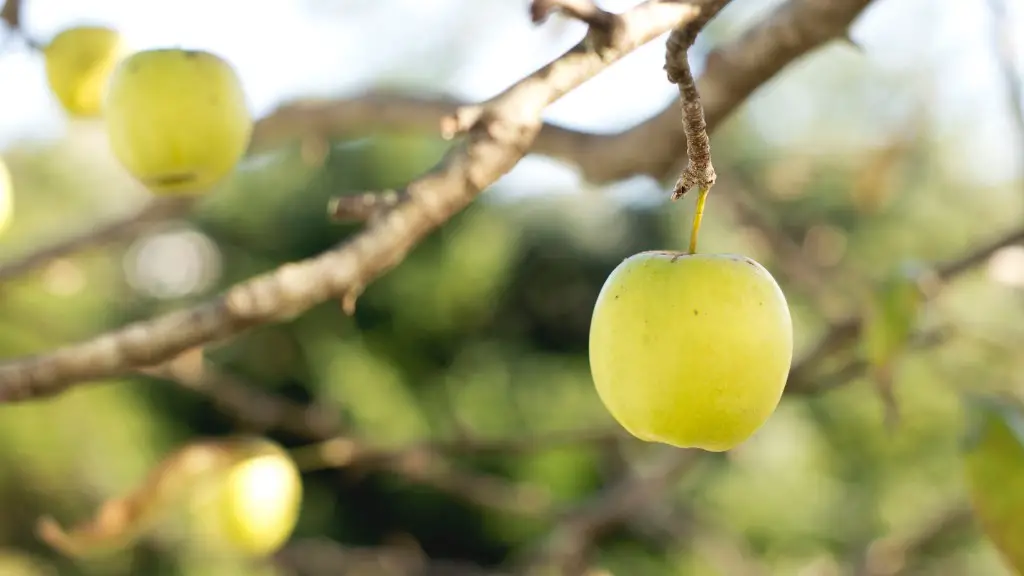Planting a lemon tree outdoors can have its benefits; not only can it be rewarding to grow your own citrus tree, but it can also provide shade and aesthetic enjoyment to your outdoors garden. With the right conditions and preparation, anyone can easily enjoy the rewards of a great lemon tree. Here are the steps to planting a lemon tree outdoors:
1. Buy a well cared-for tree from a nursery: Lemon trees like warm climates, being native to Southeast Asia. Purchasing a tree from a nursery that can guarantee the health of the tree will ensure you achieve the best outcome.
2. Prepare the planting spot: Choose an area of your garden that it is sunny, especially during the winter, as they like a lot of sun. Make sure to dig a hole which is wider than the tree roots, with well-draining sandy loam soil if possible.
3. Place the tree in the hole: Place the tree in the hole ensuring the roots are covered with soil and the tree is even. If planting multiple trees, be sure to leave at least six metres in between them.
4. Water the tree: Water the tree thoroughly after it has been planted, with around two to four litres of water, making sure to soak the soil in the vicinity. Once the tree is established, it will require regular watering in the summer to ensure its health.
5. Ensure the tree is sheltered: If possible, construct a shelter for the lemon tree. A shelter will help protect its foliage during winter and aid temperature regulation during any extreme temperatures.
6. Add a layer of mulch: Place a layer of mulch, one to two inches thick, around the bottom of the tree. This will help retain moisture in the soil and keep tomatoes and grubs away.
7. Prune your lemon tree: Once the tree has been established, it will require regular pruning to promote growth. Remove any dead, diseased, or crossing branches and prune the canopy to ensure the tree shape is even and productive; this should be done at least once a year.
Feeding a Lemon Tree Outdoors
Feeding your lemon tree will not only help it stay healthy, but it will also help encourage growth. The frequency of feeding a lemon tree will depend on its age and size, but is generally around once every six weeks. Firstly, use a balanced fertiliser such as 10-10-10 for mature and less vigorous trees, or a fertiliser with higher concentrations of nitrogen for larger, rapidly-growing trees. Secondly, apply the fertiliser evenly around the tree perimeter and water thoroughly to allow the fertiliser to reach the roots. Thirdly, mulch the tree area to ensure the short-lived nutrients are retained in the soil over time and help control any weed growth.
Planting Lemon Trees
Citrus trees like lemon and oranges need a sunny, sheltered spot, preferably away from strong winds, to ensure the best fruiting results. Typically, a full-sun position is preferable with at least 6 hours of exposure per day. If possible, position the tree near a tree, fence or wall to help act as a windbreaker. Additionally, the soil should be well-draining, with the ideal composition of sandy loam. Take note of the growth rate and size of the tree when selecting the planting spot, as the tree has the potential to become quite large when mature.
Controlling Pests for a Lemon Tree
Pests, such as aphids, thrips and spider mites, can cause damage to a lemon tree, so it is important to regularly inspect for any signs of infestation. If you notice any damage from pests, apply contact or systemic insecticides or horticultural oils; note that the timing of application is important, and making sure the product is safe to use in fruit trees is paramount. Also, where available, introduce natural predators such as ladybugs, who feed on the aphids, to help limit the pest population.
Diseases Affecting Lemon Trees
Powdery mildew is a common fungi found in citrus trees which presents itself as white and grey spots on the leaves. To prevent any fungal issues arising, ensure the trees have enough air circulation, by avoiding overcrowding. If infected, there are various fungicidal treatments that can be sprayed onto the tree, or alternatively, remove any leave which are badly infected.
Pruning Lemon Trees Outdoors
Prune your lemon tree regularly to encourage healthy, branch and fruit production. Start pruning in late winter or early spring, targeting any broken, crossed or dead branches, then thin out any growth which is growing inwards or outwards, particularly at the top of the tree. Pruning will also help aid air circulation, reducing the potential for fungal issues. Lastly, regularly prune off any fruits which are showing signs of damage, to ensure the rest of the crop remains healthy and uncontaminated.



